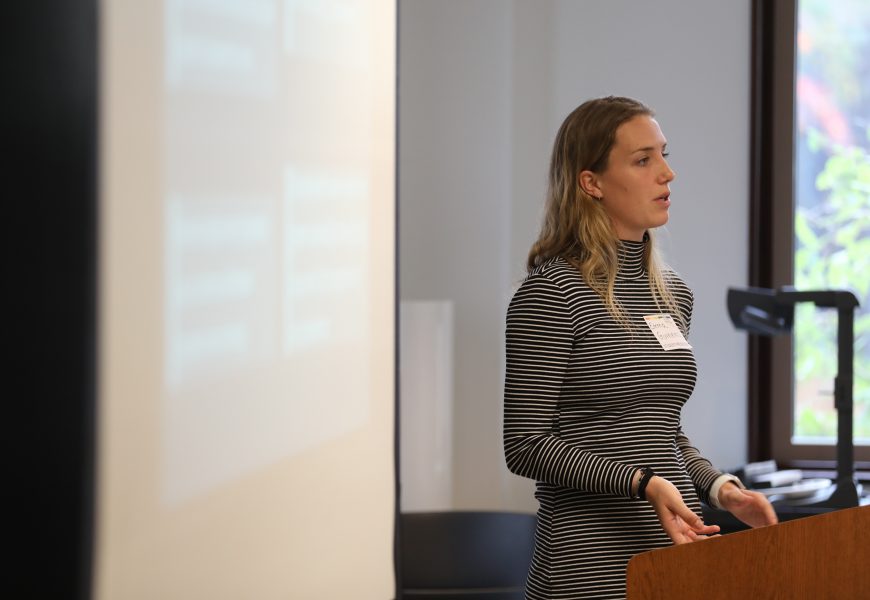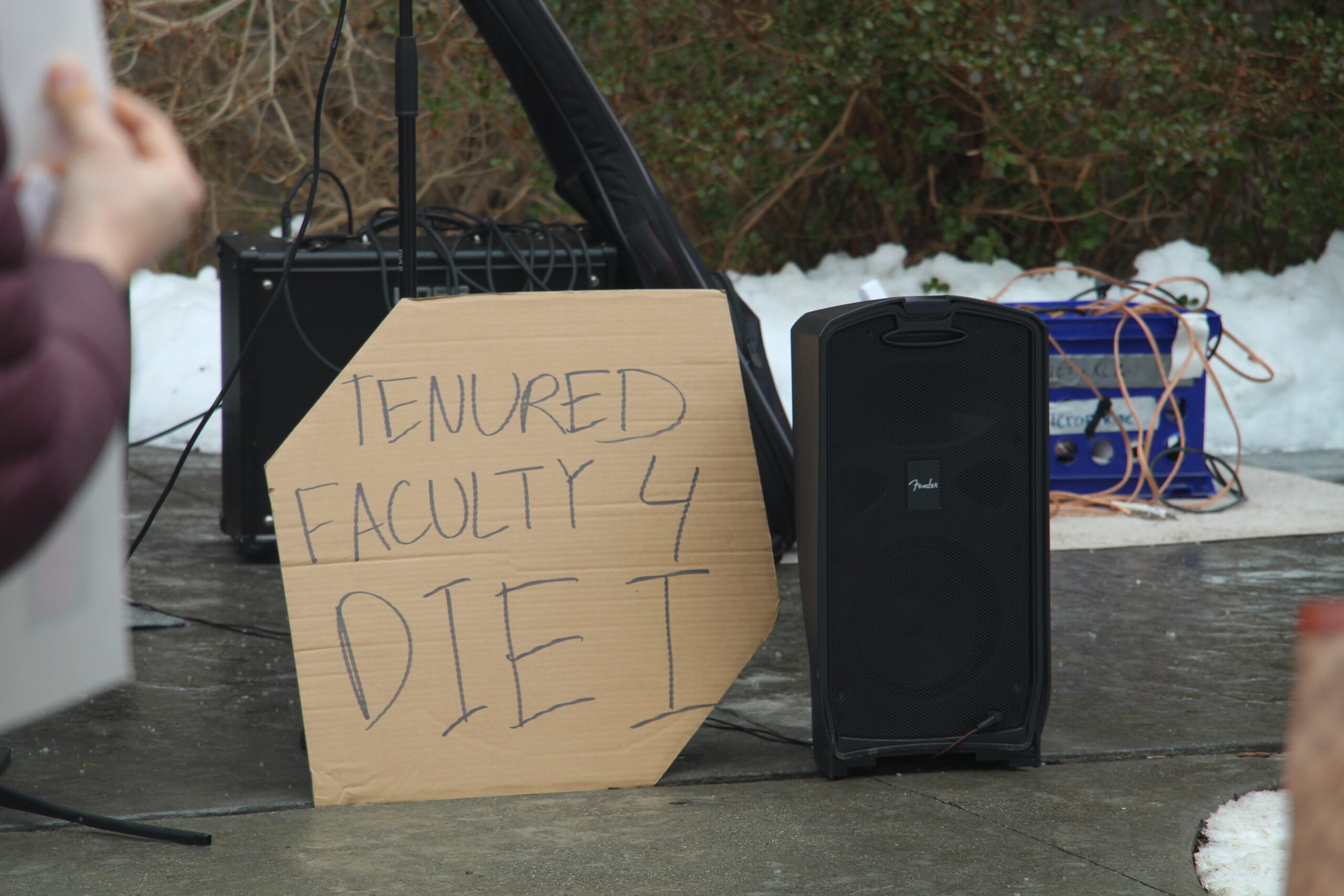On Thursday, Nov. 7, Connecticut College held its first All-College Symposium to celebrate the work the senior class has done, either through a Center or an integrative Pathway. From 9 am to 4 pm, students congregated in various academic buildings to share how they have put their liberal arts education into action. Amidst the photographers, cupcake displays, and Connections flyers, it was pretty easy to get caught up in the excitement of the day and forget about the individual presentations. Rather than focusing on the symposium holistically, I want to highlight a few presentations that our classmates have accomplished so as to honor the work they have done. As part of my Feminist Theory class, I visited four of my classmates’ presentations to see how intersectionality comes into play within the liberal arts.
Em LaLiberte, a member of the Social Justice and Sustainability pathway, presented “Creation as Catharsis: An Exploration of Zines.” As described on LaLiberte’s poster, a zine is a “small-circulation self-published work … usually reproduced via photocopier.” When I asked LaLiberte about the history of zines, they told me that zines have been used for decades (as far back as slavery) to spread information among marginalized communities. Zines are a great way to publish information without needing to conform to the desires of a publisher, and their concise, easy-to-read format makes them accessible to people of all ages and backgrounds. LaLiberte provided some of their own zines, which covered topics such as LGBTQIA terminology and sex workers. As LaLiberte states on their poster, “the zine format is an easy, accessible way to share information, ideas, and art, as well as flex creative muscles!”
I also learned a lot about the opioid epidemic from Emma Guntheinz, who is a Holleran Center for Community Action and Public Policy scholar. Her presentation, entitled, “Opioid Dependence in Pregnant Women: A Neurological, Socioeconomic, and Policy-Based Approach,” explored how particular programs can better support pregnant women who are addicted to opioids. She noted that sex as a biological variable directly impacts how a person reacts to Opioid Use Disorder (OUD). However, most research on OUD focuses almost entirely on male bodies, which is problematic because female bodies tend to react differently to opioids than male bodies. In general, women with OUD tend to relapse more frequently because they experience more intense withdrawal symptoms. Additionally, there is a lack of gender-specific care at treatment facilities, as only 19 states have funded treatment programs specifically for women. Guntheinz’s Holleran project focuses on the ways that legislation and facilities can improve pregnant women’s access to treatment in these kinds of facilities.
Tyla Alexander, a member of the Bodies and Embodiment pathway, explored race and gender in “The Politics of Black Women’s Fashion.” Using her background in Sociology, Gender and Women’s Studies, and Africana Studies, Alexander examined how black women’s bodies are policed and the ways these women can empower themselves through fashion. Alexander presented a fashion diary that documented various looks inspired by African and African American culture. She noted the way that these brightly colored outfits and natural hair styles made her feel more confident, as they embraced “the royalty and power of black women.” Towards the end of the presentation, Tyla presented a poem entitled “Sometimes I Forget.” The work talked about the importance of self-love for black women, as many societal forces work to limit their empowerment. Ultimately, Tyla’s project demonstrated how fashion allows black women to reclaim authority over their own bodies.
The last member of my Feminist Theory course who presented was Tessa Reagan. Reagan is also part of the Bodies and Embodiment pathway, and her presentation was titled “Control, Resistance, and Womxn’s Bodies.” Reagan’s project focused on various artistic endeavors that represented themes of body image and self-surveillance. She used these ideas to create an empowerment curriculum at Camp Rim Rock, an all-girls summer camp in West Virginia. Her campers completed a total of three art projects: one focused on body image expectations (as demonstrated by strict dress codes, for example), another focused on the impact of media on body image, and the final project illuminated positive female role models. Reagan will present her research at the American Camp Association in San Francisco to report on why these activities are vital for young girls’ development.
There were many more presentations that I visited throughout the day that I believe deserve to be mentioned here. Marissa Domantay’s project on Intersectionality deeply affected me, especially after I read through the creative writing pieces featured in her project. Specifically, Nifemi Olugbemiga’s heart-wrenchingly beautiful poetry on being a black woman on campus made me rethink every instance that a black or brown person has been featured for the college’s benefit, whether through an advertisement or as a selected speaker. Sophia Angele-Kuehn, Co-Editor-in-Chief of The College Voice, told the wondrous story of how she was inspired to write a memoir for her CISLA SIP. After finding her grandfather’s book in Shain Library one day about his life growing up half-Jewish in Nazi Germany, she learned that there was so much more to her heritage than she had previously known about.
So many more projects and presentations from the symposium demonstrated how our education here at Conn can help us achieve long-lasting change. Although sometimes you may feel that your work here is futile, these presentations are a reminder that what we learn and accomplish here will help us in the long run. Whenever you start to feel like a walking advertisement for the College, remember that you are so much more than an Instagram post, website background, or a clip in a promotional video. Your intellectual work matters, and should be valued regardless of whether it can bring in more donors or applicants. •










